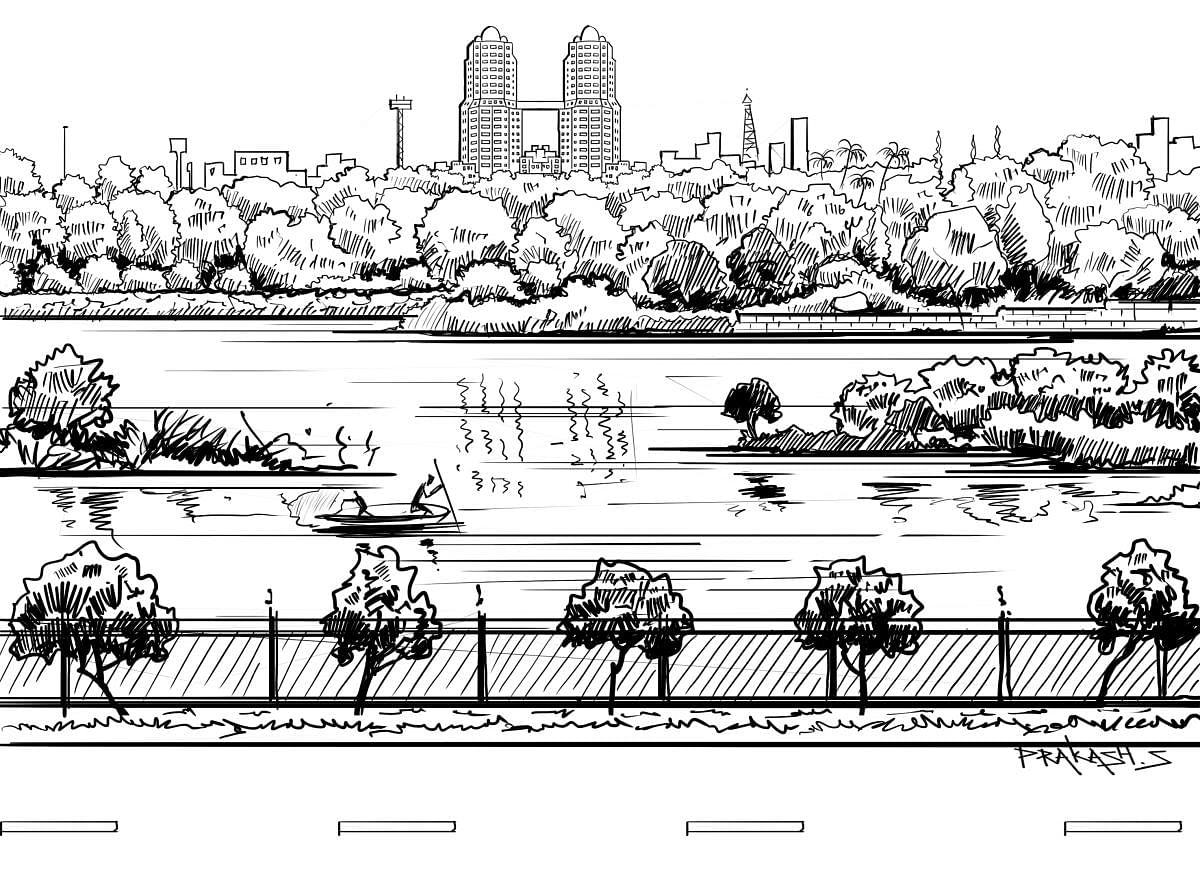
Before the likes of Silk Board and Tin Factory became Bengaluru’s marquee traffic jams, Hebbal flyover was Bengaluru’s introduction to complete gridlock, a daily massive traffic jam that would guard the city from the north, deterring anyone that wanted to enter unless they had plenty of patience.
And unlike the jams at Silk Board and Tin Factory junctions, the traffic jam at Hebbal flyover at least commanded a great view – Hebbal Lake with its three sylvan islands, and if the time of the year was right, plenty of migratory birds.
Bengalureans today do not depend on Hebbal Lake for any of their water needs, but the lake and the water it provided are the likely reason why Hebbal has been one of Bengaluru’s oldest inhabited localities. An inscription stone was recently found near the tiny but ancient Maaramma temple in Hebbal, that talks of the heroics of a man named Kittayya in defending Perbolal (a name that morphed into Hebbal over the years) from Rashtrakuta raiders who were fighting the Gangas, in whose kingdom Hebbal lay. This inscription stone dates all the way back to 750 AD, which makes Kittayya the first-named Bengalurean.
The locality has an even more significant contribution to this city’s history. For this, we need to start with the name Bengaluru.
The name does not start with Kempegowda, as one may suspect. And the name definitely does not come from ‘Bendakaluru’, i.e. ‘city of boiled beans’. The fancy folk tale of an old lady feeding a king some boiled beans is as full of gas as those beans. Nor did we borrow from Lord Venkateshwara alias Vengata, as some believe, to get to Vengaluru.
The theory that many historians favour is that it comes from the ‘benga’ tree (Pterocarpus marsupium) that is quite plentiful in these parts. The name, in its exact form of Bengaluru, has been around at least since the 9th century. We know this thanks to an inscription stone dated to that time that was discovered in a temple at Begur back in 1915. You can see this inscription in the Government Museum on Kasturba Road these days. Another inscription stone from Madiwala from a couple of centuries later also talks of Bengaluru.
So, it is clear that there was a place named Bengaluru somewhere in the vicinity of Begur and Madiwala, not all that far from the Silk Board junction.
Fast forward a few centuries, and we get to Kempegowda’s planned city of Bengaluru. Was it the same Bengaluru that used to be near Begur? Not to let Silk Board snatch its glory again, this is where Hebbal shows up. In his 1897 work, ‘Mysore: A Gazetteer Compiled for Government’, B L Rice notes that Kempegowda borrowed the name Bengaluru from a hamlet to the northwest of Hebbal Lake. B N Sundar Rao, who wrote the seminal ‘Bengaluru Itihasa’, goes further and states that Kempegowda’s mother came from said hamlet, which is why he named his planned city Bengaluru, but does not offer any additional substantiation to this theory. But given that Kempegowda was from Yelahanka, and later inscription stones that mention Bengaluru are predominantly found in the northern and western parts of the city, quite far from Begur (e.g. there was one found in Nelamangala during the time of Kempegowda II), it does seem likely that the name Bengaluru, that got attached to Kempegowda’s city, came from the vicinity of the Hebbal flyover rather than the one near Silk Board junction.
(Thejaswi Udupa is a writer who thinks of Bengaluru as home and, naturally, has very strong opinions about its boundaries)
